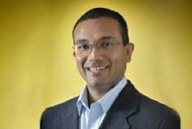Introduction
As the Western media markets approach saturation, the growth story now clearly lies in the Global South—specifically India, Asia, the Middle East, and Africa (IMEA). With fast-growing youth populations, booming smartphone penetration, and a hunger for local content, the IMEA markets have become pivotal to global media expansion plans.
From television broadcasters like Paramount Global, OTT giants like Netflix and Viu, film studios like Warner Bros. Discovery, and post-production leaders like Technicolor—top CEOs are navigating nuanced regulatory environments, hyper-local content demands, and digital infrastructure gaps to shape the future of global entertainment.
In this exclusive overview, we bring you direct insights by leading global media CEOs, tailored to their approach across IMEA.
Television Broadcasting CEOs: Reviving Linear with Local Innovation
Bob Bakish – CEO, Paramount Global
“India and Africa aren’t just growth markets—they’re creative markets. We’re here to co-create, not just to export.”

Bob Bakish’s expansion strategy hinges on integrated ecosystems—television + streaming + local partnerships. In India, Paramount’s joint venture with Viacom18 has scaled up dramatically, with linear channels (like Colors) continuing to thrive alongside JioCinema’s streaming dominance.
Key Strategies:
• Multilingual linear feeds with regional news and entertainment.
• Leveraging sports broadcasting (IPL, Big Bash, La Liga) to drive TV loyalty.
• Investing in African production houses to build content for both local TV and global syndication.

Wade Davis – CEO, Univision (TelevisaUnivision)
“We see strong parallels between Spanish-speaking markets and markets like India and Southeast Asia—multi-language, mobile-first, culturally rich.”
Univision’s success in North America is being adapted for Asia and Africa through joint productions and format sales. Davis is particularly focused on drama serials, game shows, and TV formats that can be localized across regions.
What’s Working:
• Selling Latin American formats into Indian, Nigerian, and Arab TV.
• Establishing co-branded local news desks in partnership with regional broadcasters.

OTT Platform CEOs: Streaming Smart, Not Just Wide
Ted Sarandos – Co-CEO, Netflix
“India taught us that success is not about pushing global content—it’s about platforming local storytelling with global infrastructure.”
Netflix's strategy has matured from a one-size-fits-all model to a highly regionalized slate across IMEA. Sarandos greenlit more than 50 original productions in India, Korean-Nigerian film partnerships, and Arabic-language crime dramas.
Highlights:
• Launched “Made in Africa” content hub in Nairobi and Lagos.
• Introduced ultra-low mobile-only pricing in India and Indonesia.
• Releasing pan-regional titles like “Delhi Crime”, “Blood Sisters”, and “AlRawabi School for Girls.”

Janice Lee – CEO, Viu (PCCW Media)
“We’re not just in Asia—we’re of Asia.”
Under Lee, Viu has become a household OTT name in Southeast Asia and is expanding into MENA and Sub-Saharan Africa. Viu’s AVOD+SVOD hybrid model thrives where credit card penetration is low.
Strategic Differentiators:
• Thai and Filipino youth series distributed in Egypt and UAE.
• Co-productions with Korean, Malay, and Arab studios.
• Emphasis on dubbing and cultural nuance over simple subtitling.

Sajith Sivanandan – Head, Disney+ Hotstar India
“Sports, drama, and local heroes—those three pillars define Hotstar’s winning playbook.”
Hotstar’s CEO sees India as the ultimate stress test for OTT platforms. The brand’s success in bundling IPL, Marvel blockbusters, and regional language content has inspired Disney’s OTT push in Indonesia and the Middle East.
Expansion Plans:
• Licensing Hotstar Originals for Arabic and Bahasa remakes.
• Developing eSports programming for young Gulf audiences.

Film Studio CEOs: From Global Blockbusters to Local Superhits
David Zaslav – CEO, Warner Bros. Discovery
“Africa and South Asia are not post-colonial markets—they are post-digital creators. We’re here to build.”
Zaslav’s leadership has seen a shift in Warner’s strategy from merely distributing films to co-producing with IMEA storytellers. The studio has greenlit regionally inspired IP in Nollywood and Bollywood, while investing in Saudi Arabia’s new film city near NEOM.
Initiatives:
• Launching “WB Originals India”, focused on OTT-first films.
• Partnering with Egyptian, Nigerian, and Indian studios to scale regional action, horror, and animated films.
• Investing in AI-driven post localization with studios in Bangalore and Nairobi.

Tom Rothman – Chairman, Sony Pictures Entertainment Motion Picture Group
“What’s global now started out local. Just look at anime, K-dramas, or Tamil thrillers.”
Sony Pictures India has produced Hindi blockbusters and is now adapting Indian IP into pan-Asian content. Rothman is exploring IP exchanges—remaking Indian thrillers in Arabic and African comedies for Indian OTT.
Key Moves:
• Funding student filmmaker programs in India and Ghana.
• Co-producing Yoruba horror films with Nigerian creators for African OTT.
Cross-Sector Learnings from IMEA Markets
Hyper-Localization Is the Future
From Viu’s Thai originals to Technicolor’s Swahili dubbing pipelines, every CEO agrees: language, nuance, and cultural cues define success.
Hybrid Monetization Works Best
Subscription-only models hit a ceiling in IMEA. CEOs are leaning into AVOD, telco bundling, micro-transactions, and crypto-wallet integrations.
Co-Productions Trump Exports
Gone are the days of simply pushing Western content. The new model is co-creating local originals with universal appeal.
Youth Audiences Are the Battleground
More than 65% of IMEA audiences are under 35. CEOs are rethinking formats—short-form series, interactive storytelling, and gamified content.
Talent Development Is a Competitive Advantage
Warner, Netflix, Sony, and Disney are all funding training academies and script labs across IMEA to build sustainable pipelines of local talent.
Challenges Still on the Radar
Despite the optimism, CEOs acknowledged persistent issues:
• Regulatory fragmentation across the Middle East and Africa.
• Piracy and parallel distribution networks.
• Data and device access in rural or low-income populations.
• Political and economic volatility, especially in sub-Saharan Africa.
Outlook: The Road Ahead for 2030
By 2030, the IMEA region will:
• Contribute 40%+ of global OTT viewership.
• Host more than 300 active regional streaming services.
• Become the largest producer of multilingual original content outside the U.S.
Global CEOs are now embedding their strategies not as outsiders entering a new market, but as collaborators shaping the future of storytelling with regional creators, platforms, and audiences.

Final Thought
As Christina Spade, former CEO of AMC Networks, once said:
“You can't just be global. You have to be glocal. And when you get that right—India, the Middle East, Africa—they don’t just give you views. They give you love.”